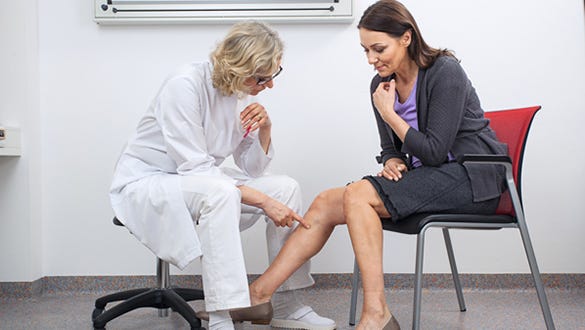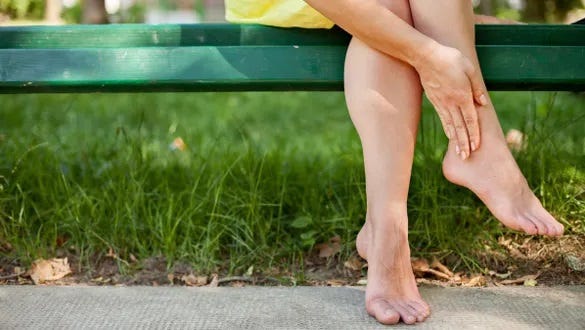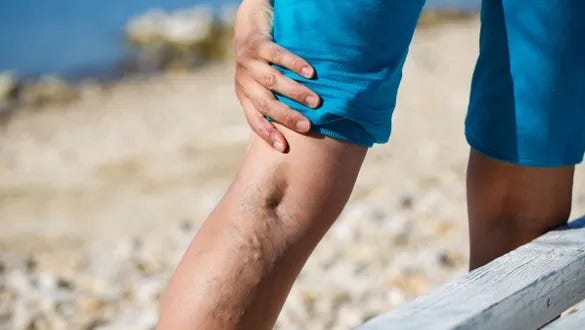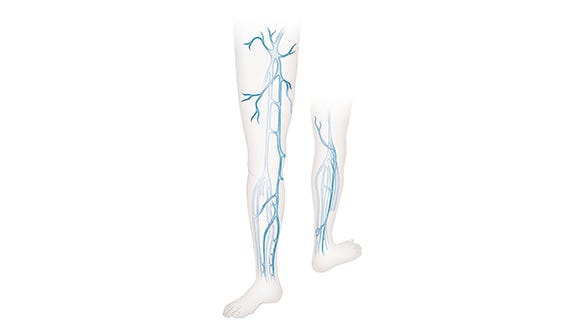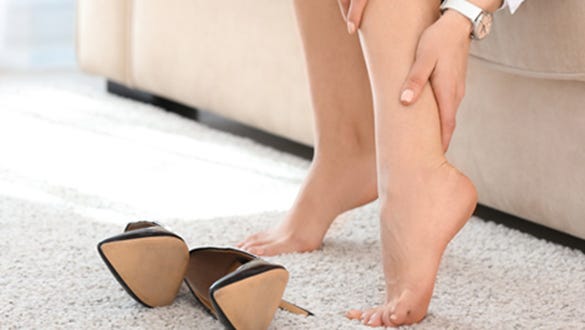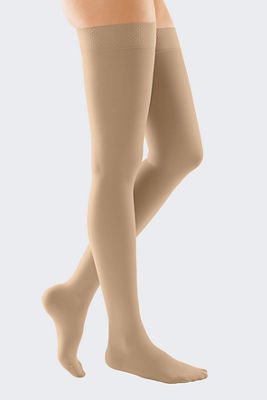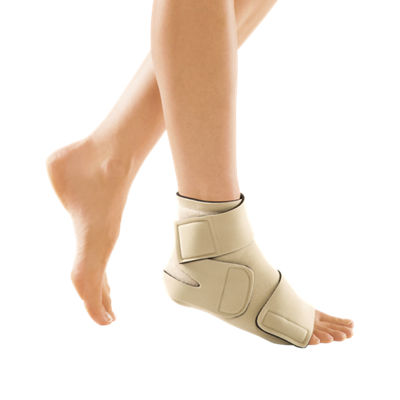- Free First Class Delivery
- Buyer Protection
- Secure Online Shopping
- Healthcare Professional? Click here
Venous diseases
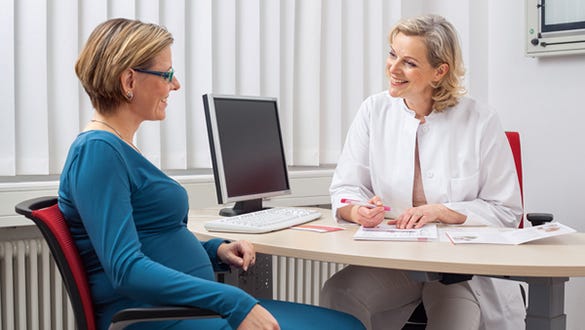

Categories
What is a venous disorder?
The arterial system transports oxygen and nutrient rich blood around the body to the cells. Following this exchange, the venous system returns the deoxygenated blood back to the heart (venous return).
Venous disease can occur when the venous system no longer functions properly. Many conditions can damage and impair the venous system, the most common conditions which affect the venous system are:
- Deep vein thrombosis (DVT) a blood clot which forms within the deep veins in your leg and can travel to other parts of the body such as the lungs
- Superficial thrombophlebitis is inflammation in the vein following a blood clot
- Varicose veins are superficial veins which become enlarged. They are visible through the skin and often appear twisted and blue/purple in colour
- Chronic venous insufficiency occurs when the blood within the veins does not all flow back towards heart but pools within the veins. This can occur when the valves within the veins which ensure a one-way flow of blood back to the heart become damaged
Here you can find out everything about the causes, risk factors and treatment for venous diseases.
Chronic venous diseases
Acute venous diseases
Symptoms and signs – how do you diagnose venous diseases?
Venous disease is a common problem, but it varies in its severity and can worsen over time leading in its most severe form to leg ulcers. Common early signs of venous diseases can be small visible changes to the legs that are initially only noticeable from a cosmetic point of view such as spider veins or mild ankle swelling. These signs do not cause any pain or discomfort but are an early indicator that the veins are struggling.
In more advanced venous disease, you may start to develop varicose veins. Again, these are more than just a cosmetic concern and if left untreated, they can lead to serious venous disease.
Adequate treatment can reduce symptoms and may improve the course of the disease.
Not all signs of venous disease are visible, legs that feel heavy, tired, itchy or have a tingling sensation may also indicate venous disease.
If you are able to recognise the signs and symptoms of venous disease early and start an appropriate treatment you can prevent your veins from deteriorating further and improve your quality of life.
Stages of chronic venous disease – the CEAP classification
Doctors define the severity of chronic venous diseases using the so-called CEAP classification.* The clinical findings range from C0 (no signs) to C6 (most severe form):
- C = Clinic (clinical findings)
- E = Etiology (causes / trigger of the disorder)
- A = Anatomy (anatomical localisation)
- P = Pathophysiology (pathological dysfunction)
| Stage | Changes |
| C 0 | No visible signs of venous disease |
| C 1 | Telangiectasias (spider veins) |
| C 2 | Varicosis (= varicose vein disorder) without clinical indication of a chronic venous insufficiency (= permanent vein weakness) |
| C 3 | Varicosis (= varicose vein disorder) with oedema (swelling) |
| C 4 | Varicosis (= varicose vein disorder) with trophic skin changes, subdivided into: |
| C 4a | Pigmentation (= skin changes) or eczema (= dermatitis, inflammatory skin reaction) |
| C 4b | Lipodermatosclerosis (= hardening of the subcutaneous fatty tissue) or atrophie blanche |
| C 5 | Varicosis (= varicose vein disorder) with healed ulcus cruris venosum (= leg ulcer, venous-related lower leg ulcer) |
| C 6 | Varicosis (= varicose vein disorder) with florid ulcus cruris venosum (= leg ulcer, venous-related lower leg ulcer) |
C 0: No visible signs of venous disease
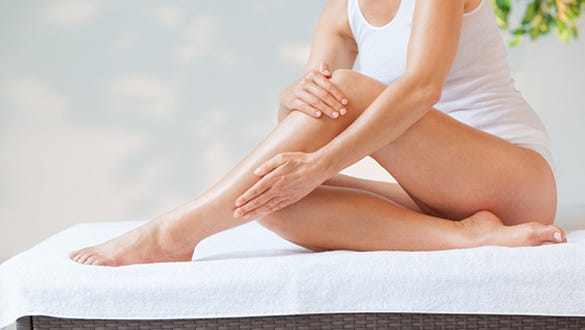

C 1: Telangiectasias (spider veins)
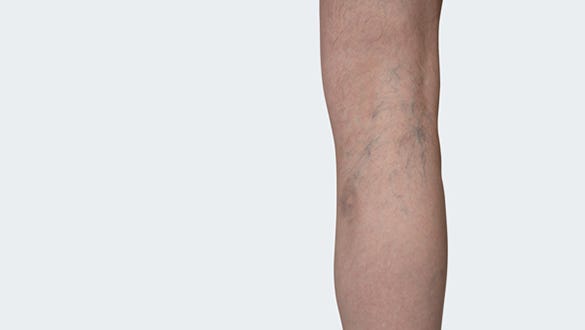

C 2: Varicosis (= varicose vein disorder) without clinical indication of a chronic venous insufficiency (= permanent vein weakness)
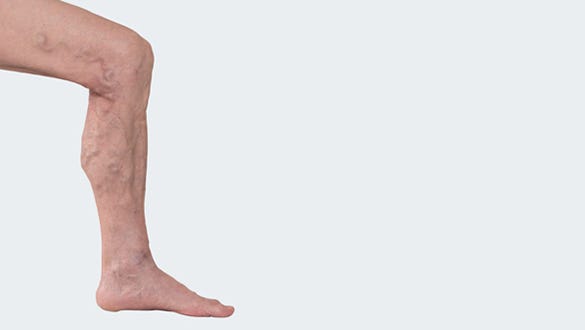

C 3: Varicosis (= varicose vein disorder) with oedema (swelling)
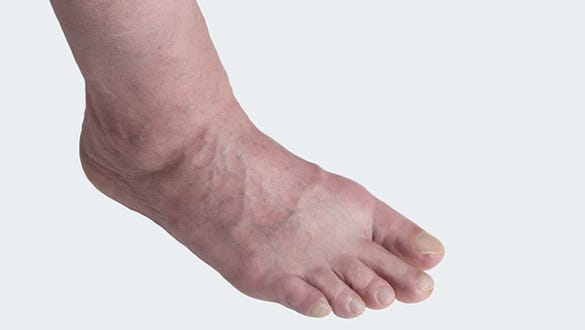

Swelling in the ankles and legs, this may appear gradually throughout the day and get better overnight with rest.
C 4: Varicosis (= varicose vein disorder) with trophic skin changes, subdivided into:
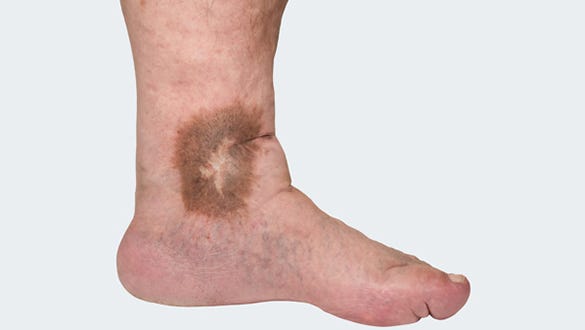

Brown or red discolouration or staining the skin (pigmentation), Changes to the condition of the skin such as dryness itching or Inflammation (varicose eczema), white atrophic scarring (Atrophie blanche), changed in the feel of the subcutaneous tissue becoming hard or woody (lipodermatosclerosis). *
C 5: Varicosis (= varicose vein disorder) with healed ulcus cruris venosum (= leg ulcer, venous-related lower leg ulcer)
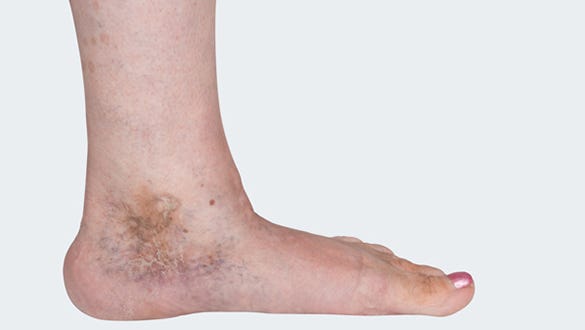

C 6: Varicosis (= varicose vein disorder) with florid ulcus cruris venosum (= leg ulcer, venous-related lower leg ulcer)
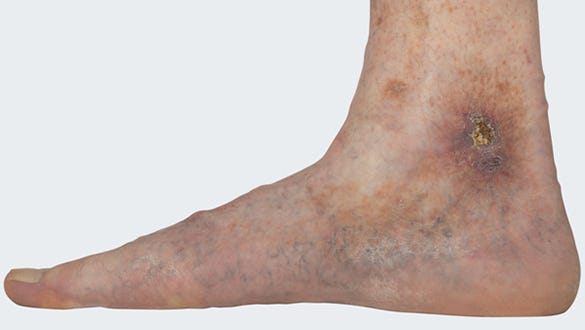

Preventing venous diseases
Take preventative action: Tips for your everyday life to protect against venous disease:
- Exercise: Make exercise a priority following the motto, “Better to walk and lie down than sit and stand”. Change your position often and raise your legs.
- Healthy diet: try to eat a healthy balanced diet.
- Optimise your weight: Reduce any excess weight.
- Clothing: Wear comfortable, loose clothing and swap your high heels for flat shoes so that your calf muscle pump can work efficiently.
- Shower: Rinse your feet regularly with cold water so that your veins contract and the blood can flow better.
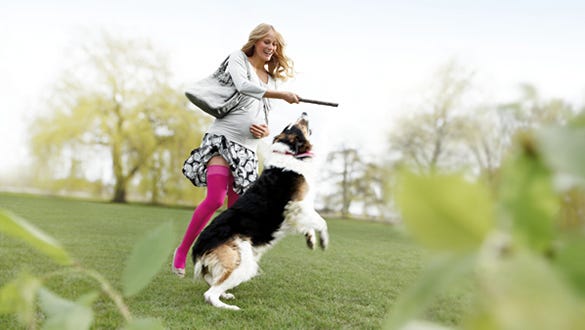



Basic therapy for venous diseases: Medical compression stockings
Wearing medical compression stockings regularly is the first line therapy for patients with vein problems. The stockings are particularly effective in combination with exercise: The muscle pump is activated, and the venous valves close better, enabling them to transport blood back to the heart more efficiently. Applying compression stockings in the morning and wearing them throughout the day will help to prevent swelling. Regularly wearing medical compression stockings significantly eases symptoms, increases quality of life and can prevent thrombosis. Wearing compression stockings on long car journeys or flights can also help reduce your risk of blood clots.
Vein problems – what can I do? Which doctors treat venous diseases?
If you are experiencing any symptoms or signs of venous disease, please consult your local GP. They will be able to assess your legs and determine the severity of your venous disease. You may need to be referred to the vascular team at your local hospital for further testing or your GP may be able to prescribe you compression stockings and help manage your condition.
medi products for venous diseases
Thanks to their breathable, soft material, medical compression stockings are very comfortable. Compression stockings come in a range of styles, colours and fabrics to suit your individual needs.
*flexikon.doccheck.com/de/CEAP-Klassifikation: Rabe, Eberhard; Gerlach, Horst E. (2005): Praktische Phlebologie. 2. überarb. A. Stuttgart: Georg Thieme Verlag.

